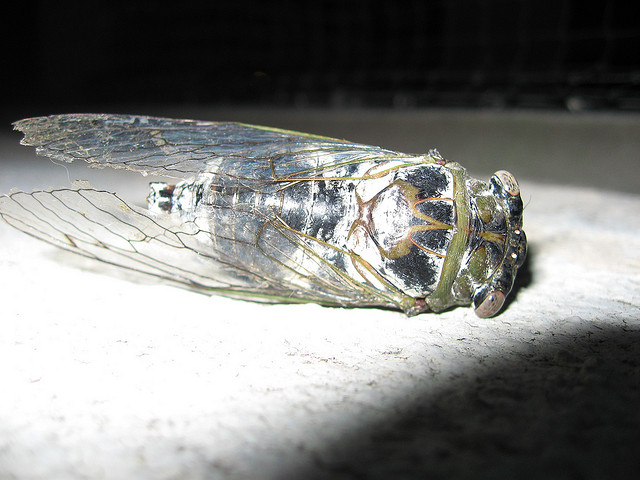Podcast: Play in new window | Download
Subscribe: RSS

Indiscriminate use of neonicotinoids threatens to bring back the Silent Spring. (Photo by Mrs Gemstone/Flickr)
For many industries, rampant destruction of the world’s topsoil (in the US, at least three tons lost for every ton of crop, multiples of that in many other countries) and water (the dead zone in the Gulf of Mexico from agricultural runoff is the size of New Jersey) might be accomplishments enough, but not Big Agriculture. It is now busily poisoning a wide range of the world’s living things. The culprit — a class of pesticides called neonicotinoids. Brought to market just 20 years ago, they are the world’s most widely used pesticides. And only now are we finding out how deadly they are.
The marketers of neonicotinoids assured us that this latest wonder of chemical agriculture was “precise” and “targeted” in its effects, dangerous only to insect pests, otherwise harmless, and a boon to struggling farmers. (See also “DDT” and “Roundup.”) The grower didn’t even have to do anything, just buy seeds soaked with the chemical, which would infuse every particle of the growing plant’s tissue and kill any insect that munched on it. That is the most common application, but far from the only one; the stuff can be sprayed, spread as granules, dissolved in irrigation water and used in bait. Much like Roundup, this new poison was, said the marketing people, all upside, no downside, so we should feel free to drench the earth with it.
And we did. One quarter of all insecticides used on the planet are neonicotinoids.
Turns out they left out a couple things.
- These compounds are ten thousand times more potent than DDT, the previous chemical to almost destroy the natural world.
- Turns out they kill not only pests, but beneficial insects as well, as they are not only in the plant’s tissue but in the pollen, fruit and flowers as well.
- That’s the stuff that actually gets in the plant. Turns out, however, that about 90 per cent of the chemical blows and leaches into the soil, surrounding fields, an unrelated plants.
- It is persistent, remaining potent for nearly 20 years, so every application is cumulative, making the soil more toxic to more things every year.
Not to mention the water. A study in Holland (NOW we’re conducting studies) found the groundwater flowing from areas where neonicotinoids had been applied was toxic enough to kill lice.
Neonicotinoids are the number one suspect in bee colony collapse, which is a threat to about one third of mankind’s food sources. One theory is that while the compounds may not kill bees directly, their toxic effect weakens the bees and makes them subject to mortality from other causes that normally would not affect them.
Back in the 1970s and 80s, after DDT laid waste to the natural world (which, by the way, is the world in which we live, without which we cannot live) there was much talk of implementing the Precautionary Principle. Instead of making people prove that commercial chemicals were harmful in order to stop their use, the Precautionary Principle holds that companies seeking to profit from the application of chemicals must first prove they are safe.
Seemed like a good idea at the time.